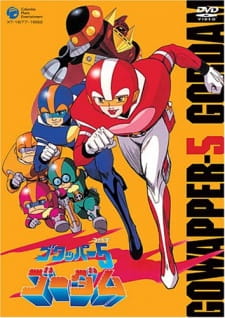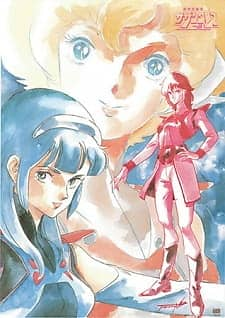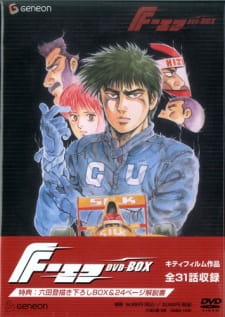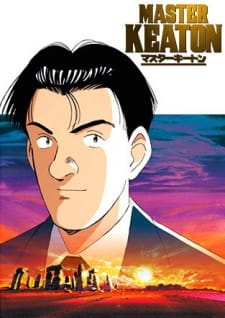Sep 3, 2023
A relatively obscure show that came out during Tatsunoko’s heyday, the most notable aspect of Godam today would probably have to be the fact that it is one of, if not the earliest anime where the main hero team has a female lead. Even apart from this though, Godam is a fun show, and features many of the strengths of peak Tatsunoko; features common across most of their output prior to Yoshida Tatsuo’s passing, including a simple but engaging story, visually distinct and memorable character designs, and great action sequences.
The show was directed by Toriumi Hisayuki, a key member of early Tatsunoko, who prior to
...
Godam had previously directed the first Gatchaman series, and is an underrated anime director in general. As a result, Godam bears many similarities to the first Gatchaman series in its direction, such as scene transitions being very natural in both, and smooth action sequences. Though Godam doesn’t feature nearly as much hand to hand combat as Gatchaman did, the combat that is present, as well as the mech battles involving the Godam, are of consistently high quality. Due to this, Godam can be enjoyed both as a hero team show like Gatchaman or Super Sentai, and also as a super robot show like Mazinger Z or Combattler.
However, this does mean that as a hero team show, Godam doesn’t leave as strong an impression as Gatchaman, and as a super robot show, it isn’t quite as memorable as Mazinger. Most of the episodes feature drama involving each of the team members in its first half, with the second half being dedicated to battles, but none of the episodes leave an impact comparable to some of the dramatic heights of Gatchaman, as can be seen in episodes 53, 85 and 88 of that show, to name a few. One of the reasons is probably due to the higher prevalence of comedy compared to Gatchaman. Not that comedy is inherently incompatible with drama, obviously, but in Godam, the comedy, while generally funny, feels like it mostly serves to take time away from moments which could otherwise be used to further flesh out the characters.
As a super robot show- though the action itself is of consistently high quality, the design of the Godam is admittedly hard to call appealing in comparison to the other super robots of the same era, and is probably one of Okawara’s weakest mecha designs. This results in the Godam feeling comparatively dull, as opposed to the sleeker feel of say, Mazinger Z.
As a hero team, the Gowappa 5 as characters are never quite as interesting as the Science Ninja Team. Still, Youko is a memorable and charismatic lead, and Gou is a likable slacker type. Norisuke occupies a position somewhat akin to that of Jinpei in Gatchaman, and probably gets the most character growth of the team. Daikichi and Goemon are heavily underutilized though, and barely get any episodes focusing on them. With Goemon in particular, though he is obviously the ‘brains’ of the team, by the end of the show, you would likely struggle listing his contributions as a member of the Gowappa 5. The designs of the team members, though, are distinct and memorable, courtesy of Amano’s character designs for this and many other Tatsunoko shows during the 70s.
The villains are probably the low point of the recurring cast, especially in light of the villains of Gatchaman, with neither of the enemy sub leaders being anywhere near as memorable as Berg Katse, and Emperor Jigokuda, while being somewhat imposing, ultimately falling far short of Leader X’s charisma.
As opposed to the greater prevalence of comedy than Gatchaman, many of the episodes feature surprisingly bittersweet or somber endings, courtesy of series planning by Toriumi Jinzou. This can come as a surprise considering the generally upbeat and energetic tone of the series as a whole. Ultimately though, more episodes end on a happy note than those that don’t.
Regarding the ending, though Godam never feels rushed, the ending does feel as if it comes a little abruptly. This was due to the fact that Godam’s main competitor was Grendizer, which resulted in Godam suffering in popularity throughout its run, and eventually ending earlier than many of Tatsunoko’s other popular hero shows from this era. Still, Godam manages to end on a satisfying, conclusive note, and could never be called rushed or unfinished.
Godam is a show with great action and distinct characters, but I feel as though the main appeal of the show is that it mixes a Gatchaman-esque hero-team-adventure feel surprisingly well with a Combattler-esque super-robot-action feel. It may not do either quite as well as those shows, but by combining the two, it stands out more than if it had only gone for one style, and remains well worth the watch for anyone interested in classic Tatsunoko shows, classic hero anime, or for anyone just looking for an entertaining watch.
Reviewer’s Rating: 7
What did you think of this review?
Nice
 0
0
Love it
 0
0
Funny
 0
0
Confusing
 0
0
Well-written
 0
0
Creative
 0
0Show all




 (1).png)























